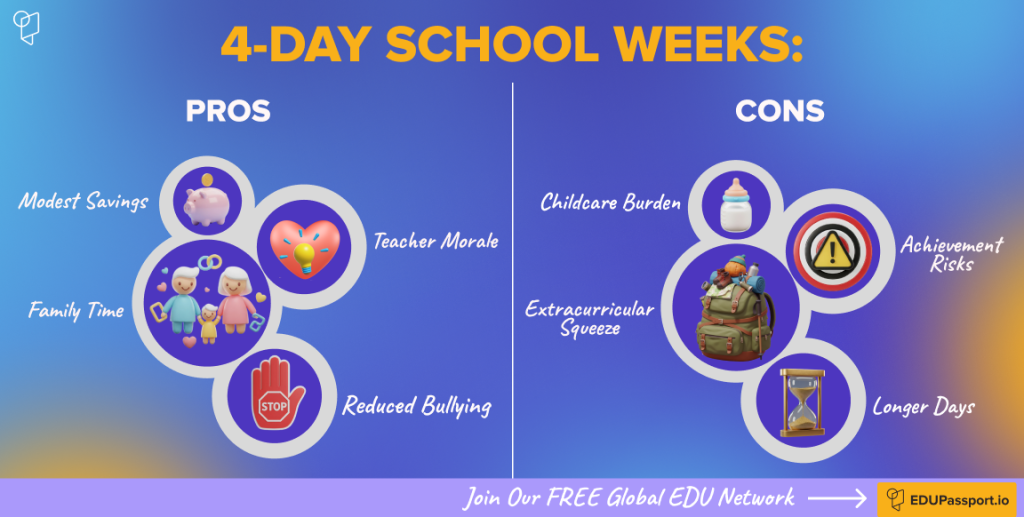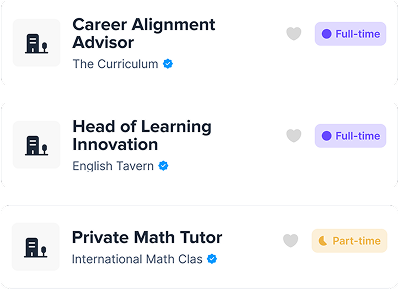A four-day school week is moving from experiment to mainstream. Districts across the US are trading five shorter days for four longer ones. The idea: save money, ease burnout, and give families a long weekend. But evidence shows both upsides and risks.
What a 4-Day Week Looks Like
Districts lengthen each school day to keep weekly instructional hours steady. Advocates point to savings, morale, and recruitment.
The Evidence Snapshot
Findings are mixed:
- Adoption has grown rapidly across districts.
- Cost savings are modest, usually a small percent of budget.
- Some report improved wellbeing, less bullying, and more sleep.
Academic results vary; scores dip when weekly hours fall under 30–32.
Pros
- Teacher recruitment and morale: extra day off boosts appeal.
- Family flexibility: families enjoy longer weekends.
- Operational savings: buses, food, and utilities trimmed.
- Reduced behavioral incidents: some districts report fewer fights.
Cons
- Risk to learning outcomes: test scores can decline.
- Longer days: especially hard for younger students.
- Childcare burden: extra cost for families on the off-day.
- Extracurricular squeeze: activities reshuffled or shortened.
- Uneven benefits: stronger effects in rural vs. urban districts.

What Schools Should Do
- Pilot before committing, with clear metrics.
- Protect weekly hours (aim for 32+ instructional hours).
- Support families with childcare or learning hubs.
- Monitor equity impacts (tech access, study space).
- Stay mission-focused, not budget-only.
Quick Takeaway
The four-day school week can help morale and modestly save money. But done poorly, it risks widening learning gaps. Districts must pilot, measure, and adapt.
How EDU Passport Can Help
We guide schools through evidence-based policy changes with planning tools, engagement strategies, and equity dashboards.





















